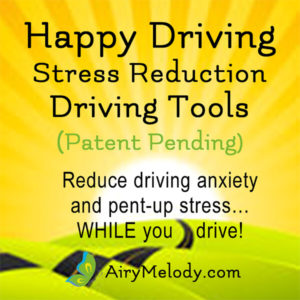Using Visualization to Reduce Driving Anxiety
Are you an anxious driver? Driving anxiety is a common problem faced by many individuals, impacting their ability to travel freely and confidently. This anxiety can stem from various factors such as previous accidents, fear of losing control, or general nervousness about navigating traffic. One effective method to reduce stress over driving is through the practice of visualization. Visualization, or mental imagery, involves creating vivid and detailed images in your mind to simulate real-life scenarios.
Here’s how you can use visualization to reduce driving anxiety:
Understanding Visualization
Visualization is a cognitive technique where you use your imagination to create a mental image of a situation or process. This practice helps in preparing your mind and body for the actual experience, reducing fear and improving performance. For driving, visualization can help you feel more in control and less anxious by mentally rehearsing positive driving experiences.
Steps to Effective Visualization
- Find a Quiet Space: Start by finding a quiet and comfortable place where you won’t be disturbed. Sit or lie down in a relaxed position.
- Relax and Breathe: Close your eyes and take deep, slow breaths. Focus on your breathing to calm your mind and body. This step is crucial for reducing overall stress and anxiety.
Happy Driving reduces anxiety WHILE YOU DRIVE![/caption]
Happy Driving relieves anxiety… WHILE YOU DRIVE!
[/caption]
- Create a Positive Scene: Begin to visualize yourself in a positive driving scenario. Picture a familiar route that you know well. Imagine yourself behind the wheel, feeling calm and confident. Focus on the details: the feel of the steering wheel, the sound of the engine, and the smooth movement of the car.
- Use All Your Senses: Engage all your senses in the visualization. Hear the sounds of the road, smell the interior of your car, and feel the seat beneath you. The more vivid and detailed your visualization, the more effective it will be.
- Visualize Challenges and Solutions: Imagine encountering common driving challenges, such as merging into traffic, parallel parking, or dealing with aggressive drivers. Visualize yourself handling these situations calmly and effectively. See yourself responding with confidence, using techniques you have learned or practiced.
- Repeat and Reinforce: Practice visualization regularly. The more you visualize positive driving experiences, the more your mind will accept them as reality. This repetition helps to reinforce positive associations with driving and reduces anxiety over time.
Benefits of Visualization
- Reduces Physical Symptoms of Anxiety: Visualization helps to calm the nervous system, reducing symptoms such as increased heart rate, sweating, and trembling.
- Builds Confidence: By repeatedly visualizing successful driving experiences, you build confidence in your ability to handle real-life driving situations.
- Enhances Focus and Concentration: Visualization trains your mind to focus on the task at hand, improving your concentration and reaction times while driving.
- Improves Problem-Solving Skills: By mentally rehearsing how to handle potential driving challenges, you improve your problem-solving skills and are better prepared for unexpected situations.
- Encourages Positive Thinking: Visualization fosters a positive mindset by focusing on successful outcomes rather than potential failures or accidents.
Tips for Success
- Be Consistent: Make visualization a regular part of your routine, especially before driving. Consistency is key to seeing results.
- Combine with Other Techniques: Use visualization alongside other anxiety-reducing techniques such as deep breathing, mindfulness, and progressive muscle relaxation.
- Seek Professional Help: If your driving anxiety is severe, consider seeking help from a therapist or counselor who can guide you through visualization and other cognitive-behavioral strategies.
Conclusion
Visualization is a powerful tool for reducing driving anxiety. By creating detailed and positive mental images of driving scenarios, you can prepare your mind and body to handle the road with confidence. With regular practice, visualization can help transform your driving experience from one of fear and anxiety to one of control and calmness. Embrace this technique, and take the first step towards enjoying a more relaxed and confident driving journey.



